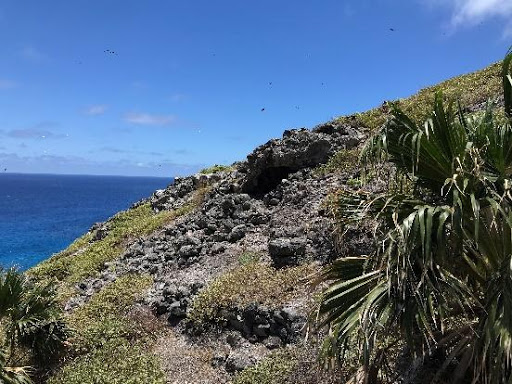
Celebrating Hawaiian Culture in Sanctuaries

There are 89 known archaeological sites on Nihoa including house platforms, heiau (religious structures), agricultural terraces, walls and cairns. Photo credit: Andy Collins
In addition to protecting natural resources, national marine sanctuaries protect, preserve, and celebrate cultural resources. The world can learn a thing or two from the deep-rooted connections Native Hawaiians have with the natural environment. Ocean stewardship is deeply embedded in Native Hawaiian culture due to the resources and spiritual sustenance provided by the ocean, making Hawaiian Islands Humpback Whale National Marine Sanctuary and Papahānaumokuākea Marine National Monument amazing sites to learn about Hawaiian culture, value system and history!
Hawaiian Islands Humpback Whale National Marine Sanctuary
This sanctuary, comprised of five separate areas adjacent to six of the main Hawaiian Islands, was designated by Congress in 1992 to protect critical humpback whale habitat. Due to the presence of humpback whales in Hawai’i’s oral and written history in the form of petroglyphs, material culture, and the names of sacred places, the sanctuary strives to understand the relationship between humpback whales and Hawaiians.
The sanctuary highlights native culture and artifacts at its visitor centers located throughout the main Hawaiian Islands, and people from all over celebrate humpback whales during peak whale season and the annual Sanctuary Ocean Count, which takes place in January, February, and March each year.
For more information about Native Hawaiian heritage at Hawaiian Islands Humpback Whale National Marine Sanctuary, click here.
Papahānaumokuākea Marine National Monument
Native Hawaiians traveled to the remote Northwestern Hawaiian Islands for thousands of years prior to discovery by Western explorers. Even today, Native Hawaiians remain deeply connected to the Northwestern Hawaiian Islands, whether genealogically, culturally, or spiritually. This marine national monument – named to commemorate the union of two Hawaiian ancestors, Papahānaumoku and Wākea, who gave rise to the Hawaiian Archipelago, the taro plant, and the Hawaiian people – was originally established by President George W. Bush in 2006 to ensure cultural access to the Northwestern Hawaiian Islands for native cultural practices, among other reasons. President Barack Obama expanded the site in 2016, making it the largest marine protected area in the United States (its protected range spans more area than all of America’s national parks combined) and one of the largest natural protected areas on the entire planet, highlighting Hawaiian natural resources and culture and giving us all something to celebrate.
For more information about Native Hawaiian heritage at Papahānaumokuākea, click here.
